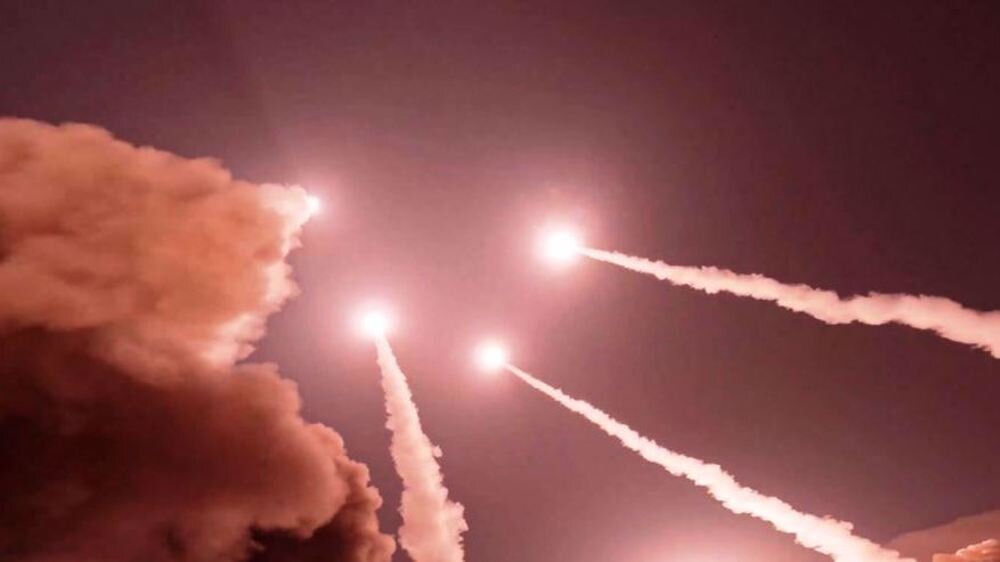A year of geopolitical challenges: where is Iran heading in 1404?

MADRID - The year 1403 in the Persian calendar came to an end, leaving behind a whirlwind of political events that have reshaped the landscape of Iran and its surroundings. The intensity of these developments has been such that it is hard to believe they all took place within just 12 months.
During 1403, for the first time in 43 years, an Iranian president, Ebrahim Raisi, passed away while in office, forcing the country to hold early elections. Meanwhile, after decades of indirect confrontations between Iran and Israel, they carried out direct and official military strikes against each other for the first time, marking a turning point in the regional conflict.
In this regard, the year 1403 saw Iran abandon its traditional doctrine of "strategic patience" in favor of a policy of "active deterrence." From a strategic perspective, this shift means that any attack on its military personnel or installations will be met with a direct response.
The change in strategic doctrine took place at the beginning of the year, following Israel’s missile attack on the building housing Iran’s consulate in Damascus in April. As a result of this attack, seven members of Iran’s Islamic Revolution Guard (IRGC), including Mohammadreza Zadehi, were killed.
Iran’s response to the attack came in the form of the operation known as "True Promise," carried out twelve days later. Militarily, the operation consisted of multiple drone and missile strikes, preceded by a series of cyberattacks targeting the Zionist regime’s power grid and radar systems, which led to widespread power outages in the region. The first wave involved dozens of Shahed-136 kamikaze drones, with approximately 100 units in total. This was followed by three additional strikes at intervals of around 30 minutes, launching between 400 and 500 drones in total.
In May, the helicopter carrying President Ebrahim Raisi, Foreign Minister Hossein Amir-Abdollahian, and other officials crashed in a mountainous area near the Azerbaijani border. All passengers on board lost their lives.
One of the key doctrines guiding President Raisi’s foreign policy was "good neighborliness," aimed at strengthening ties with regional countries. This doctrine, which remains the cornerstone of Iran’s regional policy, must be analyzed alongside two other fundamental strategic pillars of his administration’s foreign policy: unwavering support for Palestine and the Axis of Resistance, which was a central priority of his government, and the "Look to the East" policy, designed to consolidate political, economic, and strategic cooperation with countries in the Eastern Hemisphere, particularly in Asia, while reducing dependence on the West.
In June, the first round of the early elections was held. Masoud Pezeshkian emerged as the winner with 10.4 million votes (43.5% of the total), followed by Saeed Jalili with 9.4 million votes (37.7%). Mohammad Qalibaf secured 3.4 million (14%), while Mohammad Pourmohammadi received 200,000 votes (0.8%).
Since none of the candidates secured the necessary majority (50% plus one vote), a second round was held on July 5, in which Pezeshkian was elected as Iran’s new president after winning approximately 16.4 million votes. Jalili, for his part, received around 13.5 million votes.
Pezeshkian’s election was overshadowed by the assassination, on the very day of his inauguration, of Ismail Haniyeh, the head of Hamas’ political bureau, who had attended as an invited guest to the Iranian president’s swearing-in ceremony.
The strategy of targeted assassinations has been employed by Israel for decades. The Mossad, Israel’s intelligence agency, has a long history of operations against Palestinian figures and other opponents of Israel in Europe, Syria, Lebanon, Egypt, and Iran. However, if the ultimate goal is to weaken groups opposing the colonization of Palestine, this strategy has failed: every assassinated leader has had a successor, as was the case with Haniyeh.
In September, electronic devices used by Hezbollah in Lebanon were targeted in coordinated explosions, causing numerous casualties, including civilians, and injuring Iran’s ambassador to Lebanon.
That same month, Hezbollah Secretary-General Hassan Nasrallah was assassinated in an Israeli strike in Beirut, along with Abbas Nilforoushan, the deputy head of operations for IRGC. Hezbollah had challenged Israel’s military dominance by establishing a "no-go zone" within Israeli-occupied territory, forcing thousands of settlers to flee from the north of the country.
In October, Iran launched "True Promise II" in retaliation. According to the IRGC’s statement, nearly 400 ballistic missiles were fired at key military targets in Tel Aviv and other areas. Iranian sources claimed that over 80% of the missiles struck their targets and that the Mossad headquarters was destroyed in the attack. The Negev Airbase, which housed F-35 fighter squadrons, was also hit.
On October 26, Israel responded with a series of airstrikes against Iran. Iranian military sources reported that most projectiles were intercepted, though limited damage occurred in Tehran, Khuzestan, and Ilam.
In November, the most significant event for Iran was Donald Trump’s victory in the U.S. elections. Despite speculation about internal divisions within his administration, Trump reinstated the "maximum pressure" policy against Iran just months later.
In December, the collapse of Bashar al-Assad’s government in Syria emerged as one of the most serious geopolitical threats to Iran in decades.
Finally, on February 7, the Leader of the Islamic Revolution, Ali Khamenei, ruled out any possibility of dialogue with the United States as long as the "maximum pressure" policy persisted. Days before the year’s end, Trump threatened Iran following attacks on Yemen, warning that any missile launch from Yemen would be considered an Iranian attack with "serious consequences."
The year 1404 is shaping up to be a decisive period for Iran. The challenges include Israel’s escalating military actions in the region, as well as the U.S. "maximum pressure" policy. However, opportunities also arise in the shift toward a multipolar world order, in which Iran could play a central role.
Leave a Comment